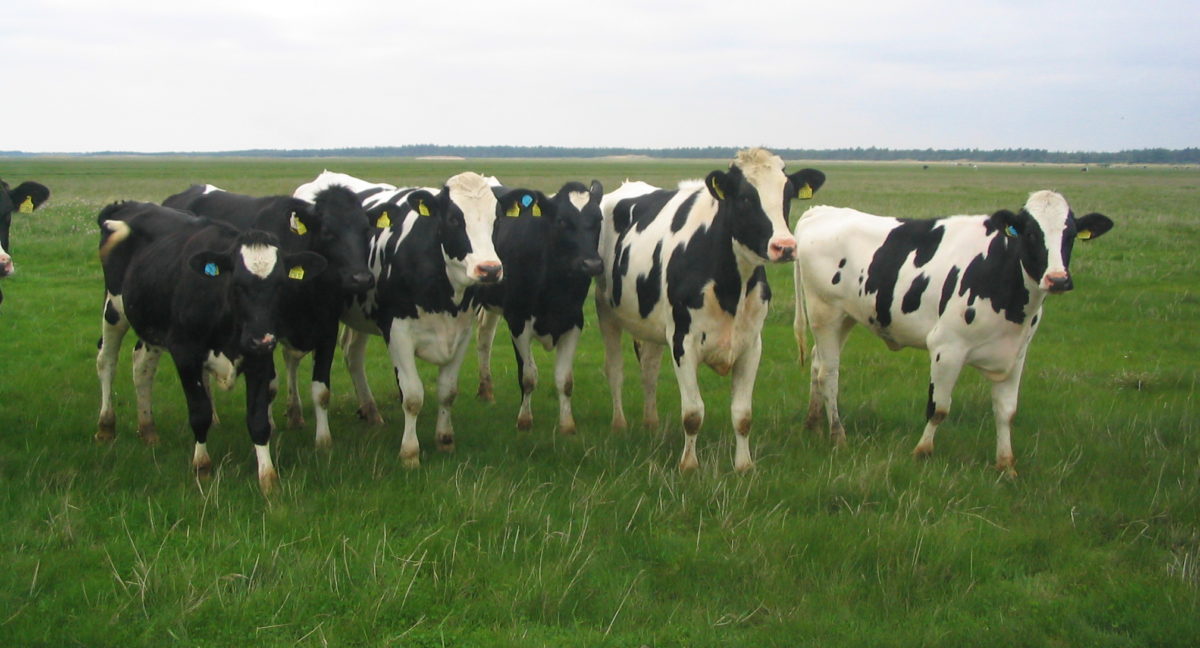March 24, 2021
By Michelle Pelletier Marshall, Global AgInvesting Media
Jane Cummings, chief technology officer at Dublin-based Cainthus, knows a thing or two about how things work – she has worked on one of the most advanced engineering undertakings to understand the fundamental nature of the particles that comprise the building blocks of our universe – so putting that knowledge to work on developing AI to create more sustainable options in farming, dairy farming in particular, was a welcome invitation.
Cainthus, a computer vision and AI startup company creating a new vision for animals, farmers, and food production, wooed Cummings away from protons and research. She is convinced that this is the decade where artificial intelligence and computer vision will radically change the way we farm and produce food.
Cummings joined the company in 2017 as a data scientist, and is now part of the leadership team. The company has gained increased exposure, such as in 2018 when Cargill took a minority stake in the company, and last November when Cainthus announced that it was looking to raise about $US50 million (€42 million) from investors.
During this time, Cainthus’ artificial intelligence software for dairy cows has been put to use on multiple farms across the United States.
GAI News caught up with Cummings to understand more about her leap from protons to AI for farming, and the opportunities in dairy cow technology.
1). I know we are talking agriculture, but we cannot overlook your contributions to the discovery of the Higgs boson particle, AKA the “God Particle”. Can you explain in laymen’s terms its significance and your work on this? What led you to make the move from this quantitative physics work to computer vision and AI for agriculture?
I worked on the ATLAS Organization at the Large Hadron Collider (LHC) at CERN in Switzerland from 2009 to 2016, which was a truly historic time for the experiment. The ATLAS organization is a large, international team of thousands of scientists and engineers from institutions all over the world. The LHC started producing data from the collisions of protons accelerated to very high energies, travelling around a 27 kilometers underneath the France-Switzerland border at near the speed of light, in 2010. At the time, I worked on some of the first measurements made with data collected in the ATLAS experiment. On July 4, 2012, we announced that we had found experimental evidence of the theorized Higgs boson at the levels of confidence required for a scientific discovery.
The discovery of the Higgs boson was the holy grail for experimental particle physics because it was the last missing puzzle piece to complete a theory of physics, called the Standard Model, that describes the way elementary particles interact through the electromagnetic, strong, and weak forces. Without the Higgs boson, there is no explanation for why particles have mass.
Working at the LHC during this time was very exciting. I loved working with the data and solving complex technical problems. And I was very lucky to experience working together with extremely talented people from all over the world to advance our understanding of physics. But after a few years, I felt that I wanted to break out of the academic bubble and use my skills to make a more direct impact on the people around me. In 2016, I decided to leave Switzerland behind and start a career outside academia.
I have found working at an agtech startup using artificial intelligence (AI) and computer vision in a quest to make dairy cows healthier and farms more productive and profitable is a dream job. I get to combine my technical expertise with a meaningful mission that has a direct and immediate impact, which I find extremely rewarding.
2). How have you brought your past experience into this position, and what has been your most exciting undertaking thus far at Cainthus?
Comparing my experiences working at CERN and Cainthus, there have been many similarities and many differences. From CERN, I bring expertise and experience in extracting measurements from complex, high frequency, unstructured sensor data. The ATLAS detector that is used to observe the proton collisions is like a very big camera that we use to take a picture of each collision. The detector weighs 7,000 tons and made up of many subsystems and millions of channels, so it is indeed a big and complex piece of hardware. With the detector, we collect millions of signals or data points for each collision event to reconstruct and predict what took place in each collision to produce a particular signature in the data. The detector was designed to observe over 1 billion collisions per second or 1 collision every nanosecond which amounts to a huge volume of data collected and analyzed each year.
At Cainthus, we deploy standard CCTV cameras to detect objects on a much larger scale using state-of-the-art computer vision and machine learning techniques. Many of the technical challenges are admittedly simpler than those we faced at CERN. However, there are plenty of challenges. The most exciting undertaking from my perspective is going from the laboratory to the real world. In the laboratory, we are working in controlled, semi-ideal conditions, where we have some control over how the data is produced and selected and we work laboriously to extract results in that setting.
The real world, on the other hand, is constantly changing. In order to be successful, we need to build solutions that work in all of the different conditions that are expected in the real-world application, from challenging light conditions to obstructions or hazards in the scene. Related to this, I would add that it is very important that we are not developing technology for technology’s sake, even if we find it interesting and challenging. We are developing technology for the sake of solving a problem for our customers. So, for me, the most exciting undertaking and the achievement that I am most proud of is that we launched two products in the space of a year that are operationalizing computer vision and artificial intelligence and solving meaningful problems for our customers.
3). How has the rollout of Cainthus’ products for the dairy sector progressed, and what are the benefits to farmers and the sector as a whole? How will it complement or compete with the technologies already available?
We have two unique products available in the market today. We have ALUS Nutrition, which provides observations and insights related to nutrition on the farm. Managing the feeding operations and nutrition on the farm is a focus for all dairy producers as it is critical to production on the farm as well as the largest cost center. We provide constant monitoring of the feed and feeding operations in each pen so that our customers know, for example, when and where feed is running low, when deliveries are late, or when the feed hasn’t been pushed up. We provide trends over time so that management is alerted when there are systemic problems occurring on the farm that need to be resolved or improved and when a change is implemented to target any such problem, the expected improvements can be observed and validated, e.g. we can observe problem areas, and we can also validate improvements when a issue has been targeted by changes in management/operations etc. With ALUS Nutrition, Cainthus increases feed intakes on the farm along with milk production, while reducing feed costs.
We have also launched our second product, ALUS Behavior, which provides observations and insights related to the cow activity within the pen. We provide constant monitoring of cows’ activities, including the time spent lying down, how long they spend out of pen to be milked, and how long they spend feeding. These are all key factors for milk production and productivity on the farm. We also provide continuous monitoring of welfare and cow comfort with the Cow Comfort Index (CCI) in each pen. With ALUS Behavior, herd managers can ensure that cows are fulfilling the optimal daily time budget while identifying potential issues, like lameness. Many issues present on farms are invisible because the data is not recorded or the data is there but it is not connected and analyzed over time. And in many cases, the solutions are simple, but it requires seeing them and knowing that they are there in order to solve them.
There is a lot of technology available on the dairy farm. Cainthus products complement many of these existing technologies, but there is no other technology on the market today that can provide precise observation of the farm and farm operations continuously over time.
4). What does the future hold for dairy farming in 2021 and beyond, based on Cainthus’ vision? And what of the much-professed decline in dairy – have your studies shown otherwise?
A flood of technology tools has come to market offering to help dairy farmers become more efficient, profitable, and sustainable. COVID-19 has accelerated the speed of adoption of enabling technology, ranging from milking and feeding robots, cameras and sensors to monitor cows, and analytics solutions. Farm technology can help tackle major challenges such as worker shortages, increased production costs, and lack of operating capital. If 2020 was the year of the dairy robots and wearables, 2021 promises to be the year of computer vision for dairy.
5). What’s on the horizon as far as investments in Cainthus?
As you can imagine, there is a lot of interest in investing in a technology that provides the fundamental infrastructure required for a more sustainable, transparent, and ethical dairy industry, and has proven commercial scalability with some of the top dairies in the world. We are always happy to speak to potential investors, and any near term capital we raise will be used for global scaling of our technology, as well as further acceleration of our commercial product development.
ABOUT JANE CUMMINGS
 Jane Cummings joined Cainthus in May 2017. She leads the team that develops computer vision and machine learning models that deliver intelligent insights at large scale to Cainthus dairy customers. Before Cainthus, Cummings worked at the ATLAS Collaboration at the Large Hadron Collider at CERN. During this time, she analyzed large volumes of experimental proton-proton collision data and made contributions to the historic discovery of the Higgs boson. Cummings has a B.A. in physics and mathematics from Grinnell College, and a Ph.D. in physics from Yale University.
Jane Cummings joined Cainthus in May 2017. She leads the team that develops computer vision and machine learning models that deliver intelligent insights at large scale to Cainthus dairy customers. Before Cainthus, Cummings worked at the ATLAS Collaboration at the Large Hadron Collider at CERN. During this time, she analyzed large volumes of experimental proton-proton collision data and made contributions to the historic discovery of the Higgs boson. Cummings has a B.A. in physics and mathematics from Grinnell College, and a Ph.D. in physics from Yale University.
~ Michelle Pelletier Marshall is managing editor for HighQuest Partners’ Global AgInvesting’s GAI Gazette magazine and its WIA Today blog, as well as a contributor to GAI News and the Oilseed & Grain News. She can be reached at mmarshall@highquestpartners.com.

Let GAI News inform your engagement in the agriculture sector.
GAI News provides crucial and timely news and insight to help you stay ahead of critical agricultural trends through free delivery of two weekly newsletters, Ag Investing Weekly and AgTech Intel.




